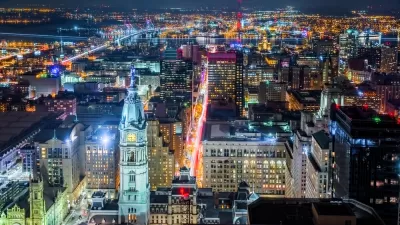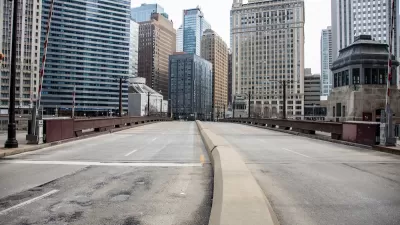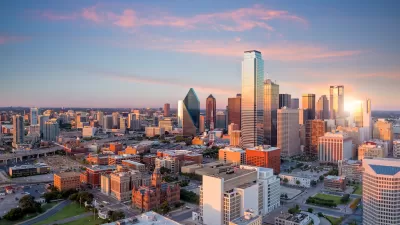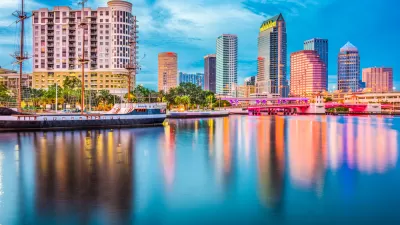A Brookings Institution study reveals that crime rates in major cities have risen, but downtown districts account for a negligible part of the growth.

According to a study from the Brookings Institution, fears about safety in U.S. downtowns are not based in fact. As Jake Blumgart explains in The Philadelphia Inquirer, the authors “ found that across the four cities, downtowns accounted for an almost negligible share of total citywide property and violent crime.”
While violent crime rates are at a high in other parts of Philadelphia, for example, the Center City neighborhood remains safer than others, accounting for only 1 percent of the growth in property crime between 2019 and 2022. Of the four cities in the study, Seattle was the only one with a higher rate of violent and property crimes downtown. In the others, the share of crimes occurring downtown remained the same or, in Philadelphia’s case, went down.
The study notes that a rise in visible homelessness and drug use, driven in part by lower foot traffic and vacant storefronts, influences the overall sense of unease felt by many urban residents, but points out that “people living on the street are more likely to suffer crime than to commit it.”
When it comes to violent crimes in Philadelphia, the study highlights the patterns that existed pre-pandemic. “Those crimes are almost wholly not taking place in Center City, but in systemically disadvantaged neighborhoods where much of the violence took place before the pandemic — and where it’s since become far worse.”
The study outlines recommended solutions that can improve safety, such as lighting and other infrastructure. According to researcher Hanna Love, “The best use of public funds would be investments in safety infrastructure in the higher-crime neighborhoods, rather than, say, adding a bunch more police officers [downtown].”

Planetizen Federal Action Tracker
A weekly monitor of how Trump’s orders and actions are impacting planners and planning in America.

Maui's Vacation Rental Debate Turns Ugly
Verbal attacks, misinformation campaigns and fistfights plague a high-stakes debate to convert thousands of vacation rentals into long-term housing.

Restaurant Patios Were a Pandemic Win — Why Were They so Hard to Keep?
Social distancing requirements and changes in travel patterns prompted cities to pilot new uses for street and sidewalk space. Then it got complicated.

In California Battle of Housing vs. Environment, Housing Just Won
A new state law significantly limits the power of CEQA, an environmental review law that served as a powerful tool for blocking new development.

Boulder Eliminates Parking Minimums Citywide
Officials estimate the cost of building a single underground parking space at up to $100,000.

Orange County, Florida Adopts Largest US “Sprawl Repair” Code
The ‘Orange Code’ seeks to rectify decades of sprawl-inducing, car-oriented development.
Urban Design for Planners 1: Software Tools
This six-course series explores essential urban design concepts using open source software and equips planners with the tools they need to participate fully in the urban design process.
Planning for Universal Design
Learn the tools for implementing Universal Design in planning regulations.
Heyer Gruel & Associates PA
JM Goldson LLC
Custer County Colorado
City of Camden Redevelopment Agency
City of Astoria
Transportation Research & Education Center (TREC) at Portland State University
Jefferson Parish Government
Camden Redevelopment Agency
City of Claremont





























